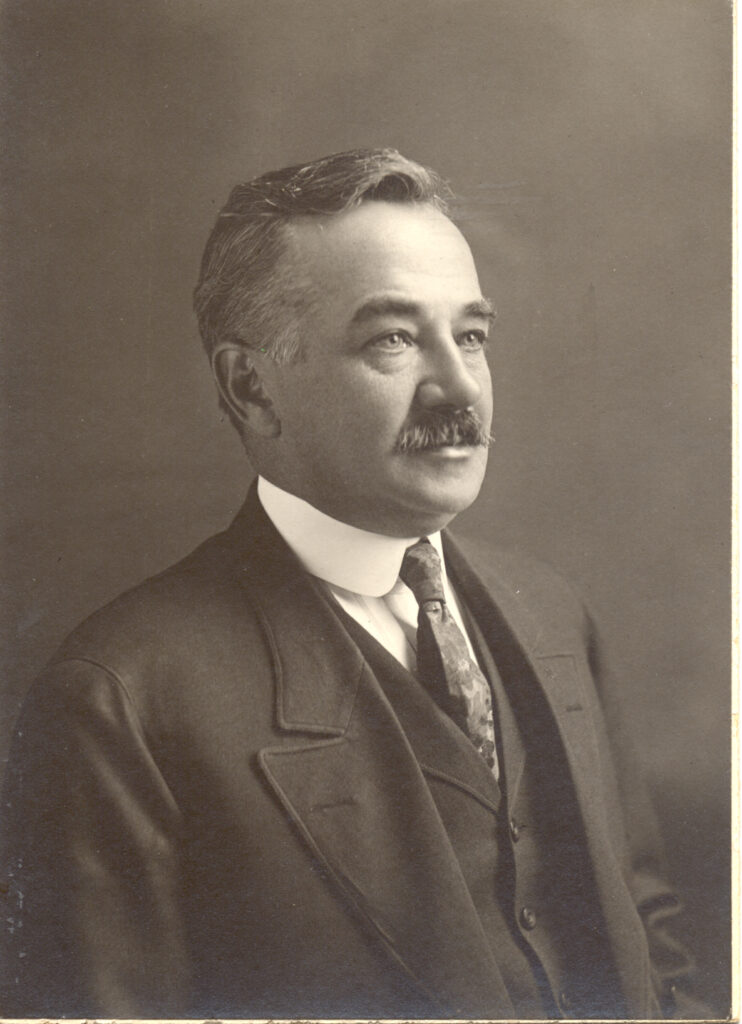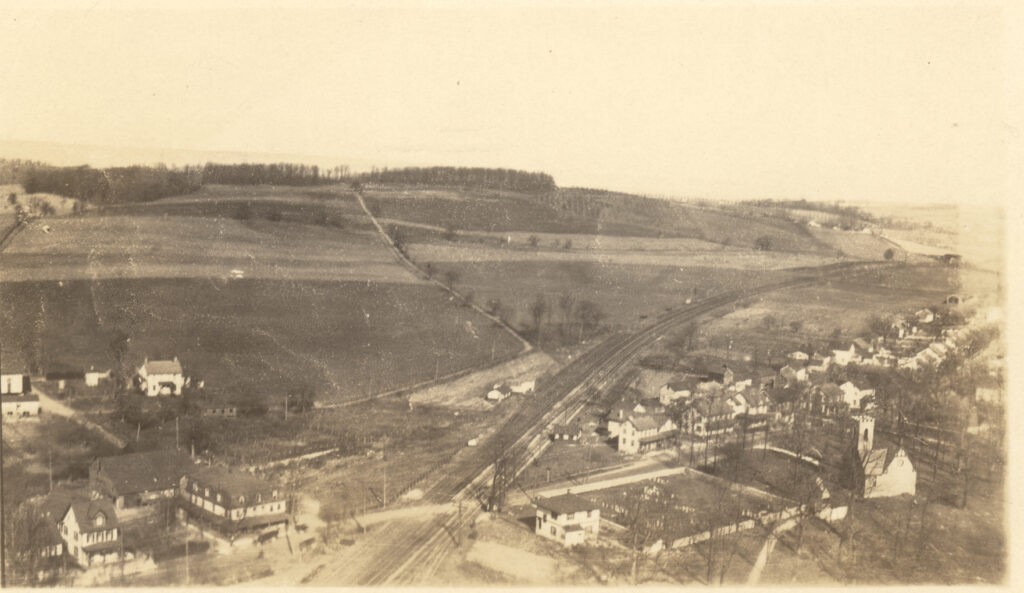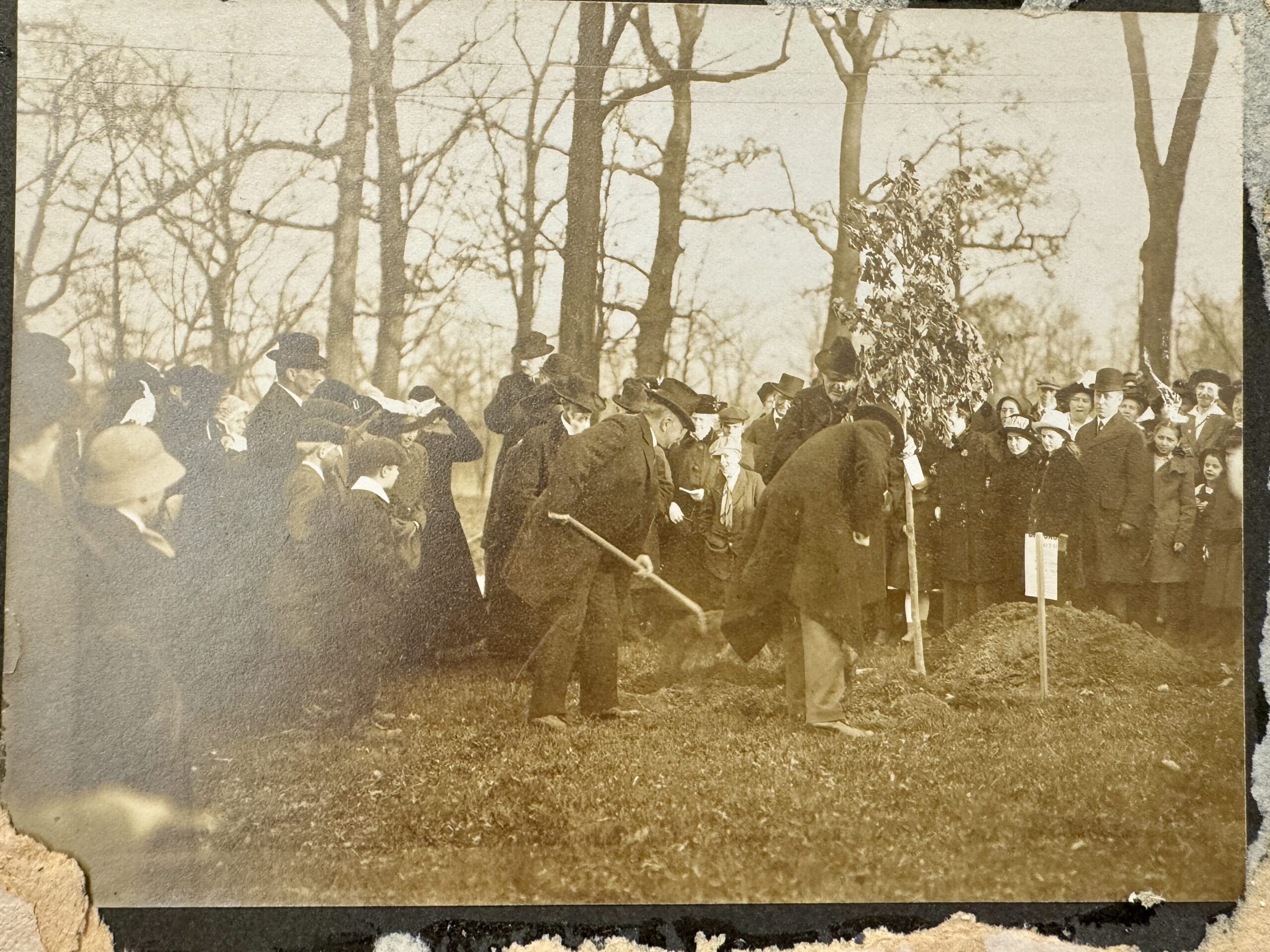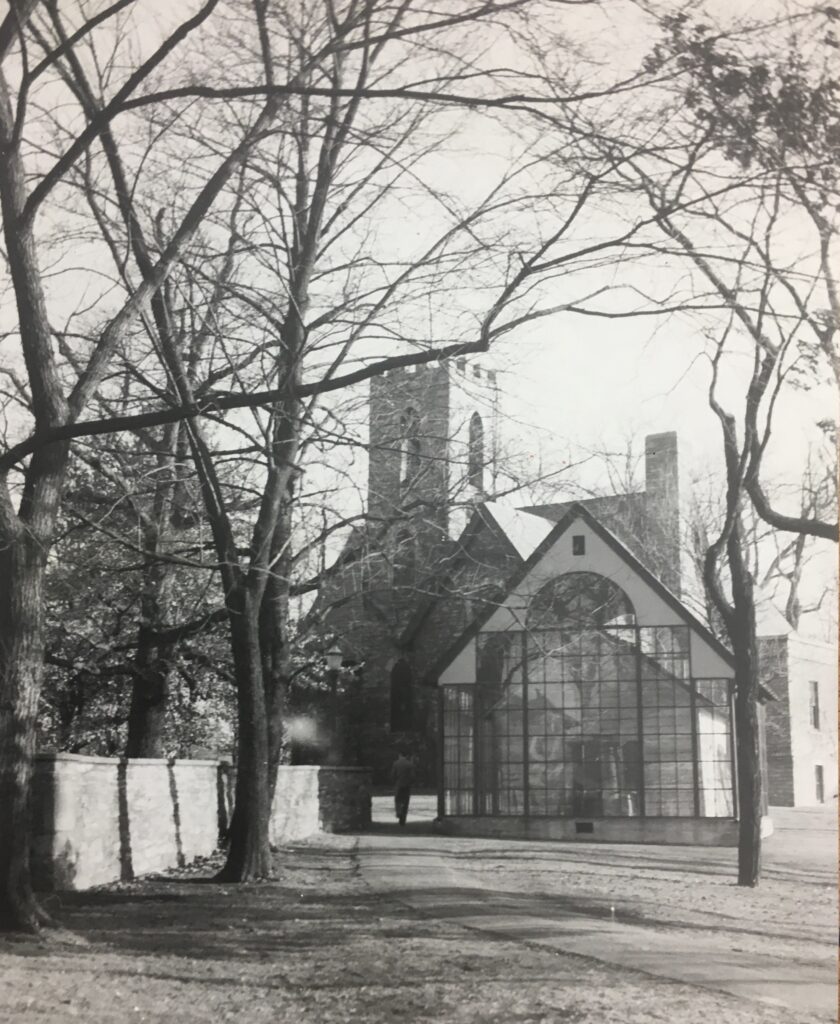Pam Whitenack • Chair, Derry 300 Committee
August 15, 2024
In 1894 Milton Hershey established the Hershey Chocolate Company in Lancaster, Pennsylvania as a subsidiary of his highly successful Lancaster Caramel Company. The chocolate business grew quickly, and he soon needed to build a new, larger factory for his company. He looked up and down the Eastern seaboard for the best location, and in 1903 he selected a site near Derry Church. Milton Hershey envisioned building not just a factory but also a model industrial town for his workers.
Milton Hershey’s construction of the chocolate factory and his decision to build a model town would have a significant and beneficial impact on Derry Presbyterian Church.
After the Chapel was completed in 1887, Derry Church continued to struggle. In 1900, membership was only about 12 people. Derry did not have the financial resources to call a pastor. Instead, Derry continued to be served by stated supply ministers, including Reverend John Groff (1895-1905), who offered a Sunday evening service each week. Reverend Groff was the pastor for Middletown Presbyterian Church during these years.

When Milton Hershey came to this area, he needed fresh water for his chocolate factory and approached Derry Church to rent the Derry Church spring. The church session agreed, and in 1903 a ten-year lease was signed at the rate of $75 a year. To manage the water flow, Hershey installed a pump at the spring and ran a line to the factory. The pump was enclosed by a shed. Hershey Chocolate Company continued to rent the spring until 1928 when Derry Church sold the land on which the spring was located to Milton Hershey to be part of the new Hershey Country Club golf course.
It wasn’t until 1909 that Derry Church was able to call its first pastor in decades, Reverend Benjamin Segelken. Milton Hershey donated one-third of Rev. Segelken’s salary, $300, to Derry that year. Carlisle Presbytery also provided financial support to the slowly growing congregation.
Milton Hershey provided financial support to Derry Church for several more years. In addition, Milton Hershey agreed to maintain the church grounds, providing funds for lawn mowing, snow removal, and maintaining the paths that connected Derry to the new community.

As the Hershey community expanded, Derry Church continued to play an important part in town events. In 1915 Derry Church celebrated Arbor Day by planting 50 trees. It was a major event, not just for Derry but for the entire town of Hershey. Hundreds of people attended. Honored guests included Pennsylvania Governor M.G. Brumbaugh and Milton Hershey. Two trees from that 1915 planting are still part of the church grounds. A Scarlet Oak stands near the rear entrance to the Sanctuary and a Laurel Oak can be found near the Chapel walkway.
The growth of the Hershey community brought new members to Derry Church. Between 1900 and 1930, Derry’s congregation grew from 12 to 150 members. By 1928, Derry had become self-supporting and no longer needed financial support from Presbytery.

The following year, Milton Hershey once again came to the aid of Derry Church. The Session House was known to be the oldest structure in Derry Township. The church was proud of the Session House and the role it had played in the church’s history. At that time the church was concerned about the preservation of the building. One day Milton Hershey and Harry Erdman, manager of the Hershey Nursery, came to the church grounds to look at some of the old trees to see if any needed care. Reverend Robert Taylor (1916-1932) came out to greet them. He asked Milton Hershey for a contribution towards the preservation of the Session House. Harry Erdman told this story in an 1955 oral history interview:
Mr. Hershey said, “Well, what’s it going to cost?”
Well, he [Reverend Taylor] didn’t have any idea. He thought $5,000 – $10,000.
Mr. Hershey said, “Well, I’ve seen a building like that over in France somewhere. I don’t recall just where it was. They had the whole thing enclosed in glass. I’ll get our architect here and see what we can do about it. We won’t give it to the Historical Society. Now is there anything else you can think of?
“No,” he [Reverend Taylor] said. “I appreciate that very much, Mr. Hershey.”
Mr. Hershey said to me [Harry Erdman] “You’ll talk to him and let me know.”
He said, “We’ll take of it. Now, come on, Erdman, let’s get out of here before we get stuck for something else.”
That year Derry Church was also making plans to expand the Chapel to add additional classroom and fellowship space. Plans were drawn up, but with the onset of the Great Depression it was uncertain if and when Derry would be able to restart the expansion project. However, in October 1934, Harrisburg philanthropist Henry B. McCormick (1869-1941) approached Reverend John Corbin with an offer of a major donation ($5,000) to help underwrite the cost of the expansion plan. The McCormick family were members of Pine Street Presbyterian Church and long-time supporters of Derry. His father, Colonel Henry McCormick (1831-1900), was one of the members of the Harrisburg Historical Society who helped raise funds for the construction of the 1884 Chapel.
In addition to Mr. McCormick’s gift, the church also received $2,000 from Milton Hershey.
Construction was nearing completion when on July 4, 1935, Milton Hershey gifted each of the Hershey community’s five churches $20,000 (Derry, Hershey First Methodist, Spring Creek Church of the Brethren, St. Joan of Arc, and Holy Trinity Lutheran). The gift helped many churches cover financial shortfalls resulting from the Great Depression. Derry Church used Mr. Hershey’s unexpected gift to expand the construction project, adding a vestibule to the Chapel entrance and new chancel furniture and architectural elements. The church also installed new carpet and purchased furniture and equipment for the new classrooms.
This unexpected gift also created an opportunity for Derry to establish a strong financial foundation. In the 1936 Annual Report, the church’s Board of Trustees shared this report:
The Year just closed has been a Happy and uneventful one to your Trustees, as with the full cooperation of the Congregation and the various organizations of the Church, they have been able to pay all bills promptly, paint the Manse, install a new fire door at the entrance to the Boiler Room, include liability insurance as a protection to the Church employees and close the year with out a penny of debt, all bills paid, and a comfortable balance in the Bank. In addition to this the congregation has an invested nest egg of $11,000 of U.S. Government bonds.
F.C. Snavely, Chairman
This $11,000 investment came from the balance of Mr. Hershey’s unexpected gift.
Milton Hershey never joined any of the churches in Hershey. It was said that he would attend each church occasionally, generally sitting in the back and leaving as worship ended. His commitment to the community he established extended to the churches that served the residents. When Milton Hershey died, his funeral was held at the Milton Hershey School Senior Hall. All of Hershey’s churches were represented at the funeral service, including Reverend William Longbrake (1941-1950).